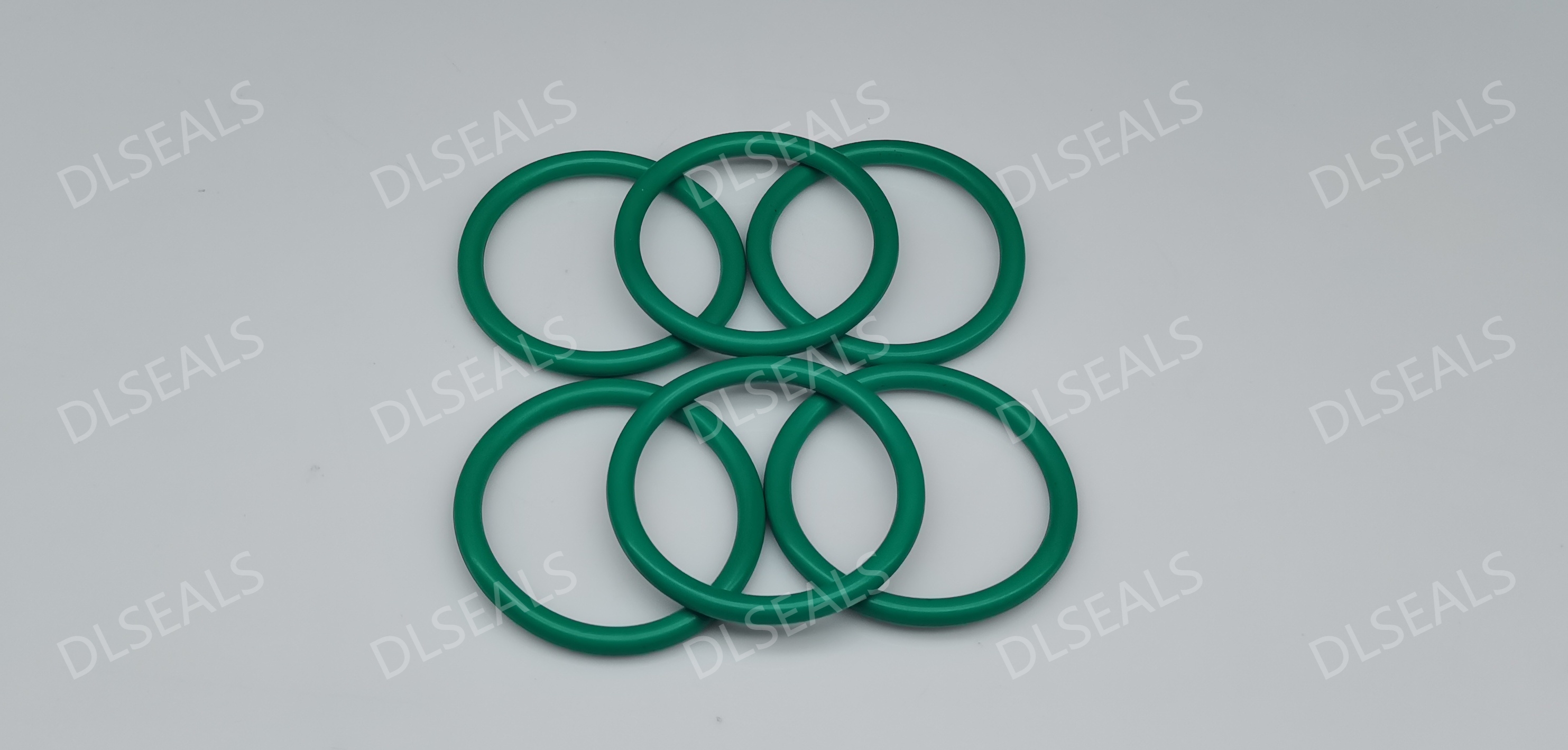
Introduction
When designing and selecting seals, the choice of materials is crucial, especially under working conditions with a pressure of 200 kPa. The seals need to have good elasticity, pressure resistance, chemical resistance, and temperature resistance to ensure their long-term stable operation. This article will discuss the commonly used seal materials and their applicability under a pressure of 200 kPa.
1. Common seal materials and their characteristics
Nitrile rubber (NBR)
Advantages:
Good oil resistance and wear resistance: Suitable for petroleum-based oil, mineral oil, and lubricating oil environments.
Moderate chemical resistance: Good resistance to some common acids, alkalis, and organic solvents.
Adjustable hardness: By adjusting the formula, nitrile rubber of different hardness can be obtained to adapt to different pressures and application scenarios.
Disadvantages:
Limited high temperature resistance: Generally suitable for temperatures ranging from -30°C to 120°C.
Poor resistance to certain chemicals: Poor performance in environments with high concentrations of acids, alkalis, and organic solvents.
Fluororubber (FKM)
Advantages:
Excellent chemical resistance: Resistant to a wide range of chemicals, including acids, bases, organic solvents and oxidants.
Excellent high temperature resistance: Typically used in temperatures ranging from -20°C to 200°C, with some special formulations even up to 250°C.
Good oil and wear resistance: Suitable for a variety of oil environments, including synthetic and animal oils.
Disadvantages:
Higher cost: Compared with nitrile rubber, fluororubber is more expensive, which may increase production costs.
Higher hardness: Generally has a higher hardness and may not be as flexible as nitrile rubber in some dynamic sealing applications.
Polytetrafluoroethylene (PTFE)
Advantages:
Excellent chemical resistance: Resistant to almost all chemicals, including strong acids, bases and organic solvents.
Extremely low coefficient of friction: Suitable for high vacuum and high-speed sealing applications.
Excellent high temperature resistance: Typically used in temperatures ranging from -200°C to 260°C.
Disadvantages:
Lower elasticity: Compared with rubber materials, PTFE has lower elasticity and is not suitable for sealing applications that require high elasticity.
Higher cost: The cost is high and may increase production costs.
2. Material selection recommendations at 200 kPa pressure
Nitrile rubber (NBR)
Applicable scenarios:
Petroleum-based oil environment: Suitable for sealing applications in petroleum-based oil, mineral oil and lubricating oil environments.
Moderate chemical corrosion environment: Good resistance to some common acids, alkalis and organic solvents.
General industrial applications: Suitable for general industrial sealing applications with a pressure of 200 kPa.
Fluororubber (FKM)
Applicable scenarios:
High chemical corrosion environment: Suitable for sealing applications in high concentration acid, alkali, organic solvents and oxidants.
High temperature environment: Suitable for sealing applications in high temperature (such as -20°C to 200°C) environment.
High oil resistance requirements: Suitable for various oil environments, including synthetic oils and animal oils.
Polytetrafluoroethylene (PTFE)
Applicable scenarios:
Extreme chemical corrosion environment: Suitable for erosion by almost all chemicals, including strong acids, strong alkalis and organic solvents.
High vacuum and high-speed sealing: Suitable for high vacuum and high-speed sealing applications.
High temperature environment: Suitable for sealing applications in high temperature environments (such as -200°C to 260°C).
3. Comprehensive considerations for material selection
Pressure
200 kPa: At a pressure of 200 kPa, nitrile rubber, fluorine rubber, and PTFE can all meet the needs. However, fluorine rubber and PTFE perform better under higher pressures or extreme conditions.
Temperature
Working temperature: Select the material according to the actual working temperature. Nitrile rubber is suitable for medium and low temperature environments, fluorine rubber is suitable for medium and high temperature environments, and PTFE is suitable for extreme temperature environments.
Chemical corrosiveness
Chemical type: Select the material according to the type of chemical contact. Nitrile rubber is suitable for general chemicals, fluorine rubber is suitable for strong chemicals, and PTFE is suitable for almost all chemicals.
Cost
Production cost: Nitrile rubber has a lower cost, while fluorine rubber and PTFE have a higher cost. In cost-sensitive applications, nitrile rubber may be the first choice.
Conclusion
At a pressure of 200 kPa, nitrile rubber, fluorine rubber, and polytetrafluoroethylene (PTFE) are all viable choices for sealing ring materials. The specific selection should be based on the needs of the actual application scenario, taking into account factors such as pressure, temperature, chemical corrosivity and cost. Nitrile rubber is suitable for general industrial applications and moderate chemical corrosion environments; fluororubber is suitable for high temperature and high chemical corrosion environments; PTFE is suitable for extreme chemical corrosion and high vacuum, high-speed sealing applications. Through reasonable material selection, the long-term stability and reliability of the sealing ring under 200 kPa pressure can be ensured.
Post time: Dec-02-2024
